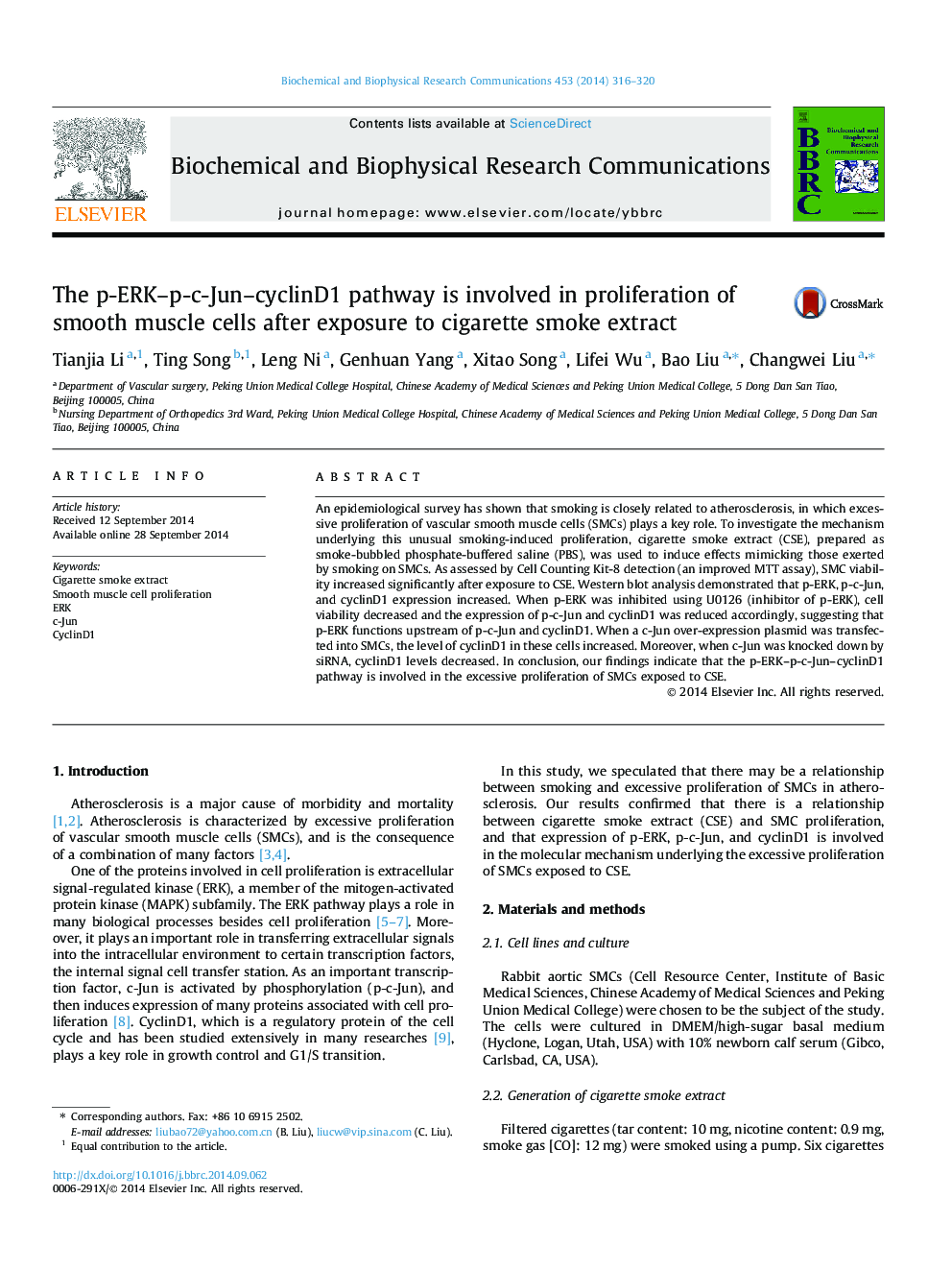| Article ID | Journal | Published Year | Pages | File Type |
|---|---|---|---|---|
| 1928406 | Biochemical and Biophysical Research Communications | 2014 | 5 Pages |
•Smooth muscle cells proliferated after exposure to cigarette smoke extract.•The p-ERK, p-c-Jun, and cyclinD1 expressions increased in the process.•The p-ERK inhibitor, U0126, can reverse these effects.•The p-ERK → p-c-Jun → cyclinD1 pathway is involved in the process.
An epidemiological survey has shown that smoking is closely related to atherosclerosis, in which excessive proliferation of vascular smooth muscle cells (SMCs) plays a key role. To investigate the mechanism underlying this unusual smoking-induced proliferation, cigarette smoke extract (CSE), prepared as smoke-bubbled phosphate-buffered saline (PBS), was used to induce effects mimicking those exerted by smoking on SMCs. As assessed by Cell Counting Kit-8 detection (an improved MTT assay), SMC viability increased significantly after exposure to CSE. Western blot analysis demonstrated that p-ERK, p-c-Jun, and cyclinD1 expression increased. When p-ERK was inhibited using U0126 (inhibitor of p-ERK), cell viability decreased and the expression of p-c-Jun and cyclinD1 was reduced accordingly, suggesting that p-ERK functions upstream of p-c-Jun and cyclinD1. When a c-Jun over-expression plasmid was transfected into SMCs, the level of cyclinD1 in these cells increased. Moreover, when c-Jun was knocked down by siRNA, cyclinD1 levels decreased. In conclusion, our findings indicate that the p-ERK–p-c-Jun–cyclinD1 pathway is involved in the excessive proliferation of SMCs exposed to CSE.
Graphical abstractFigure optionsDownload full-size imageDownload as PowerPoint slide
